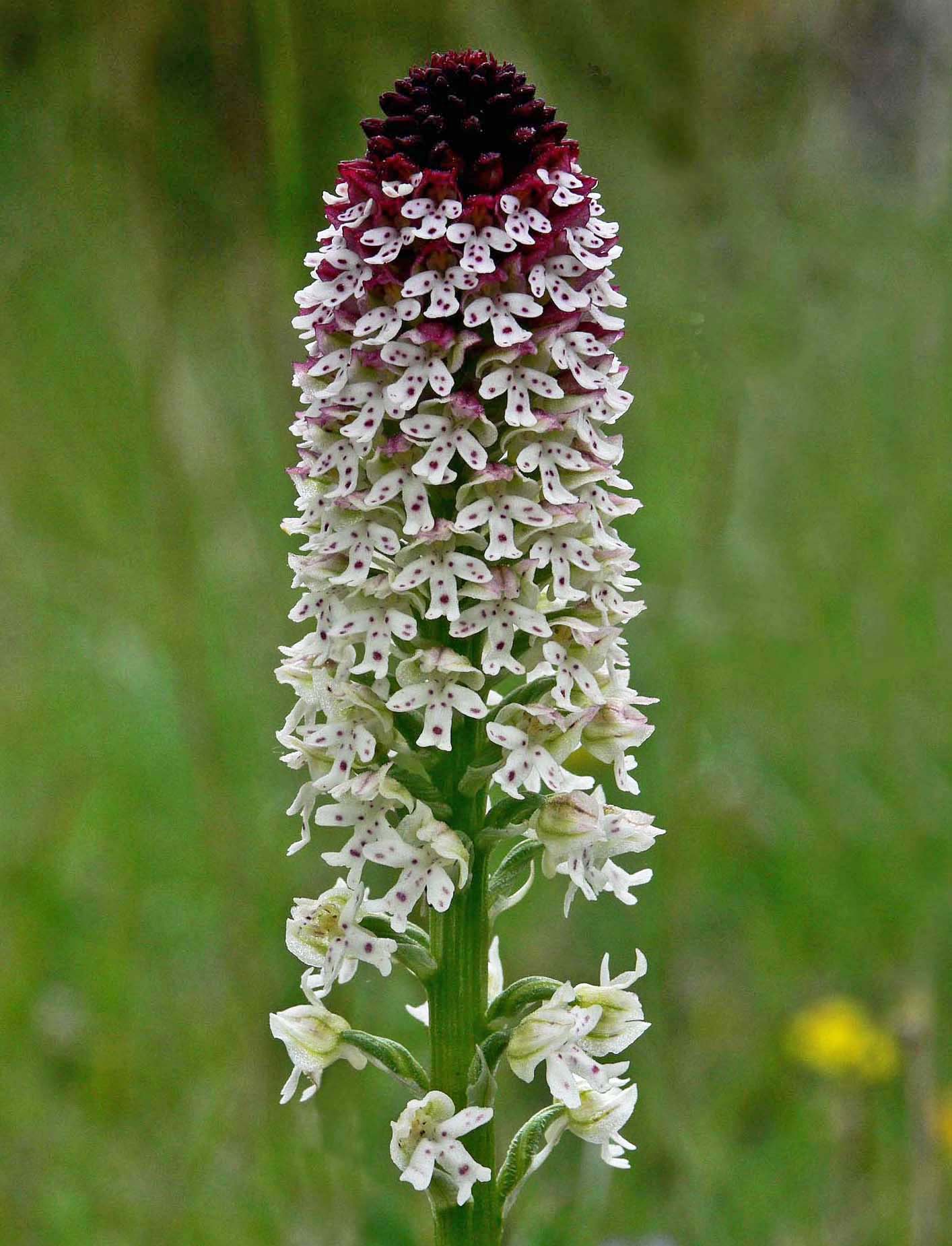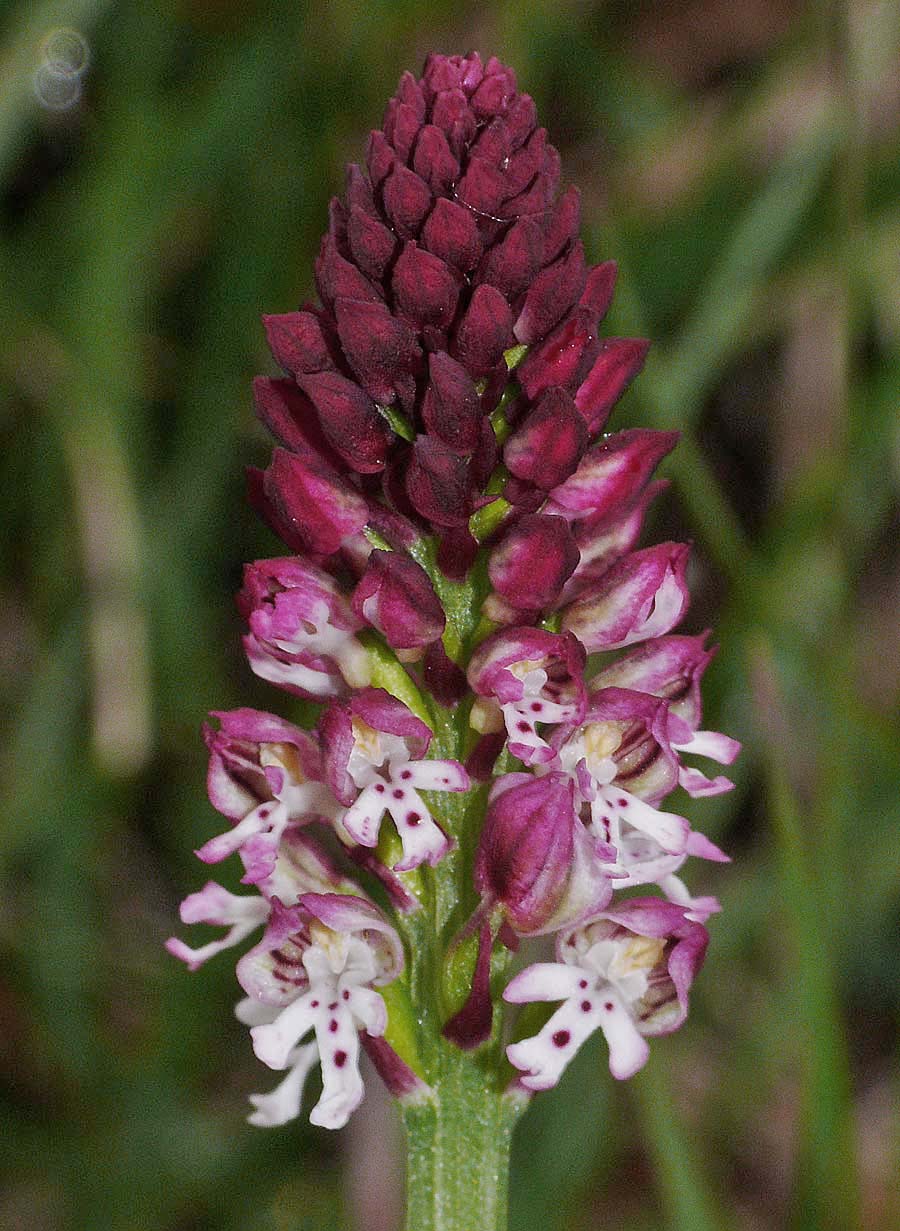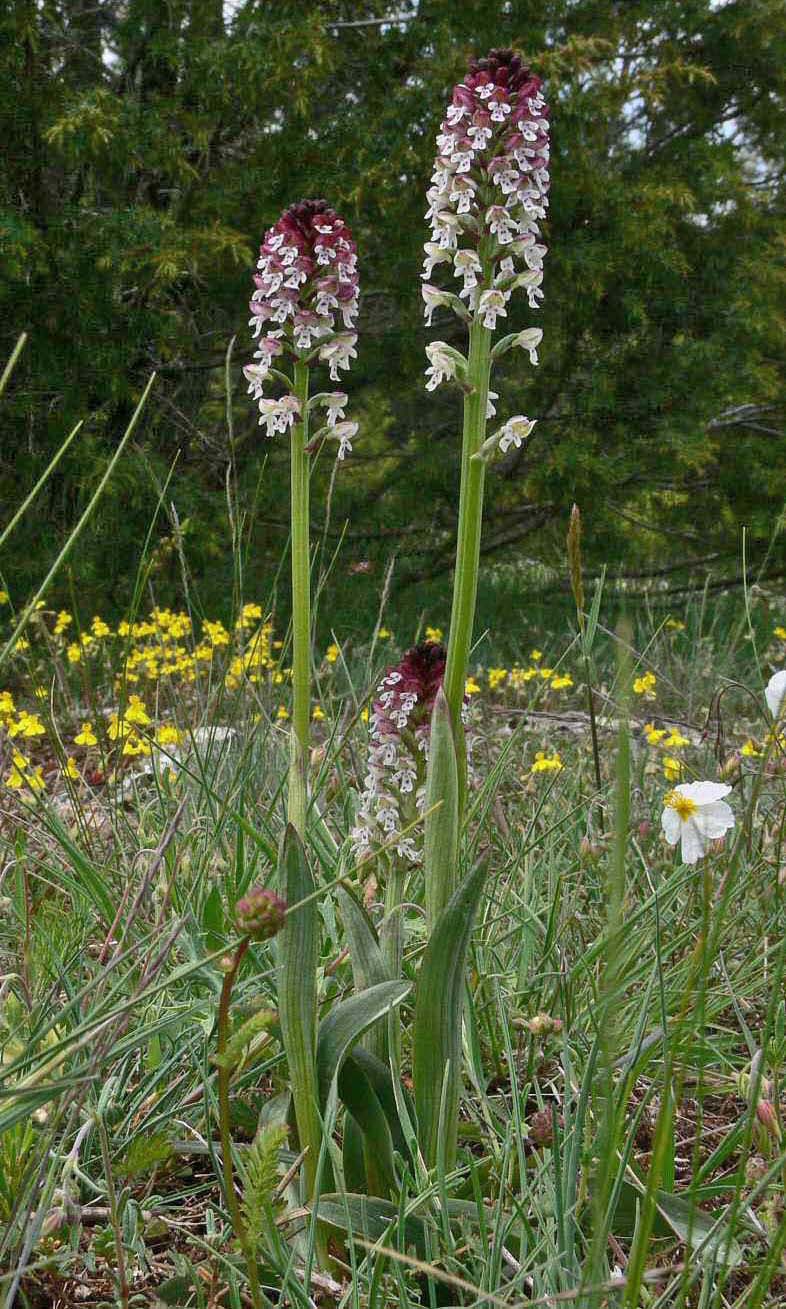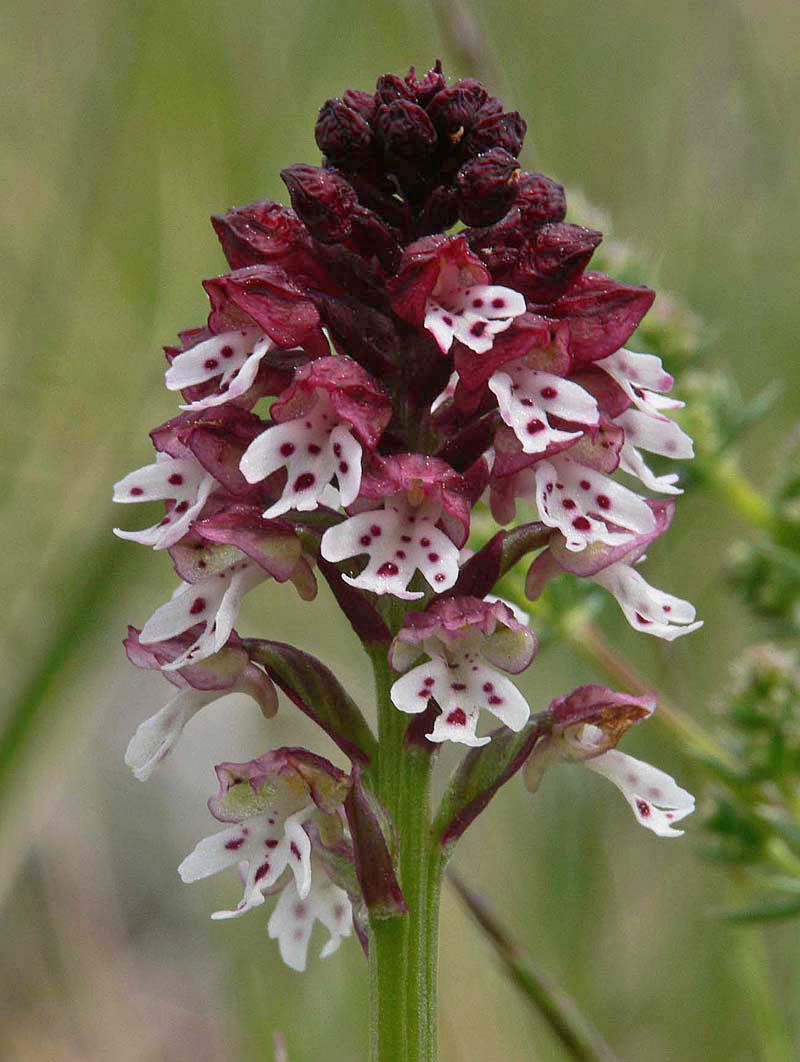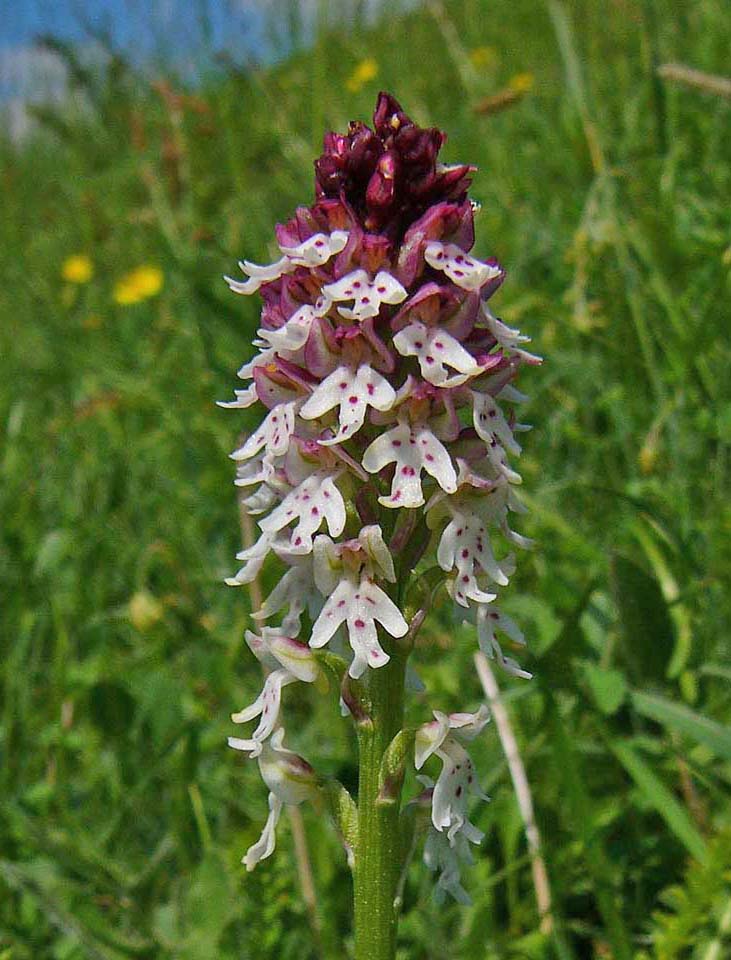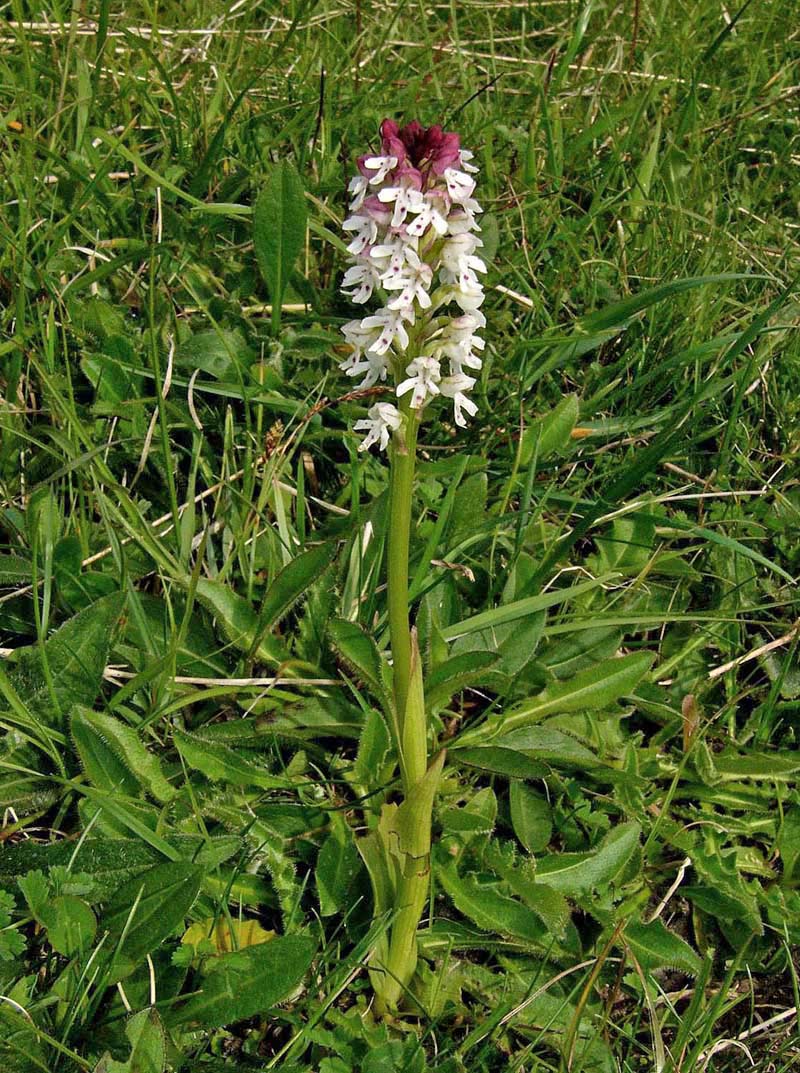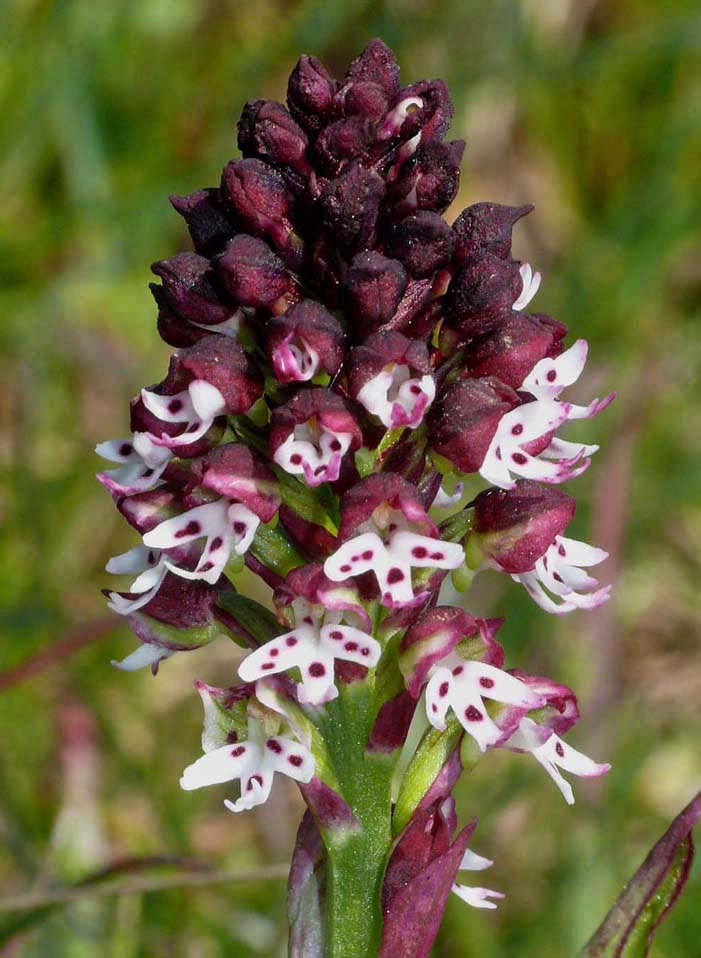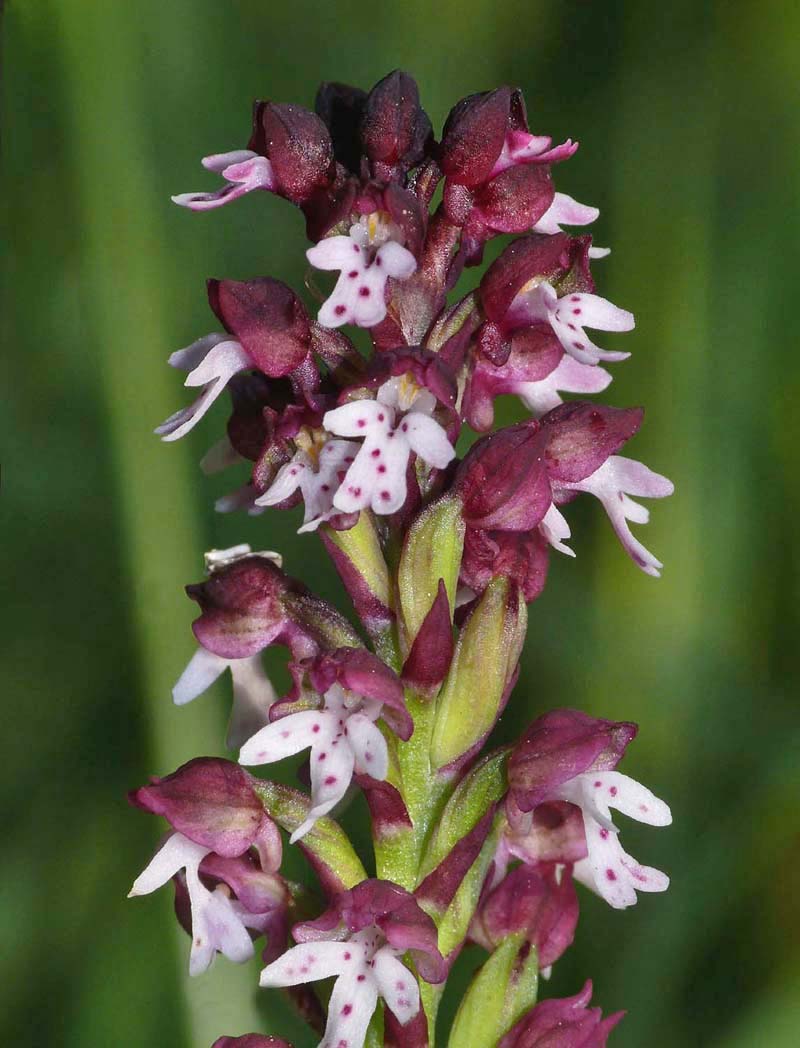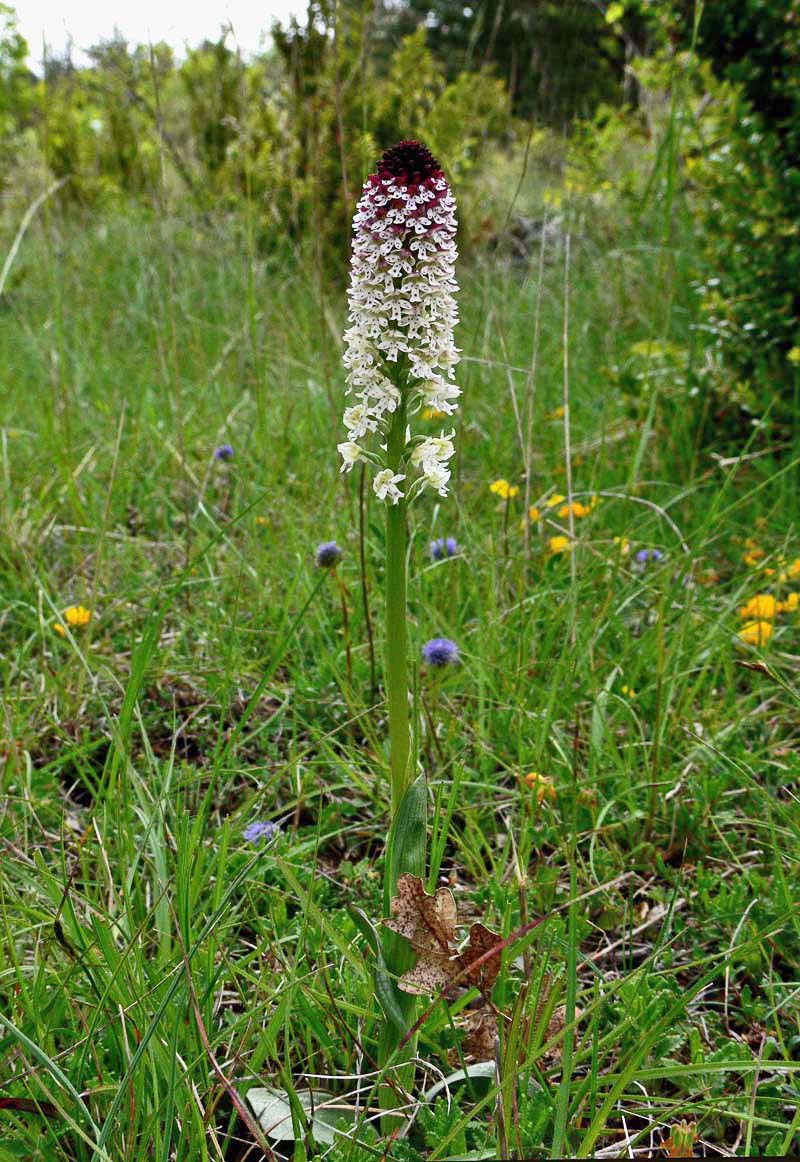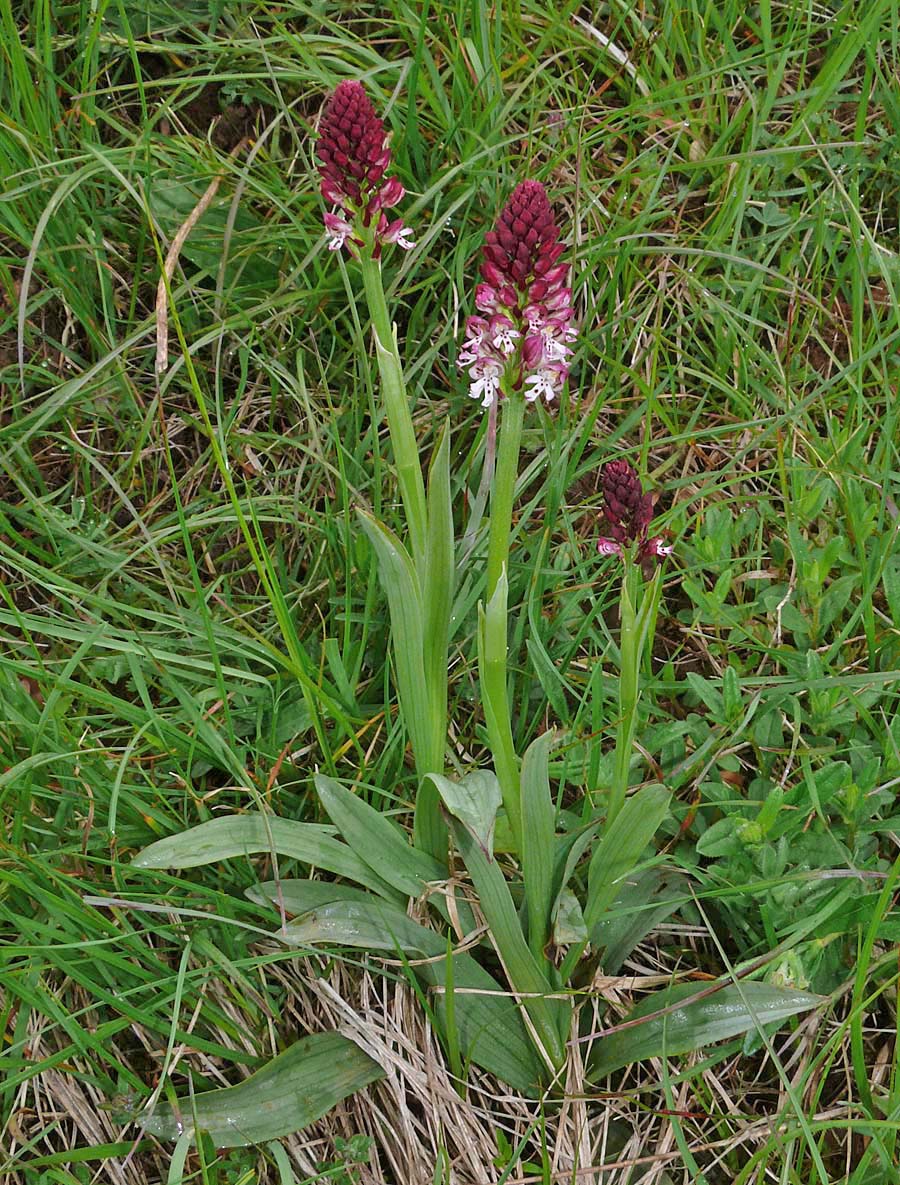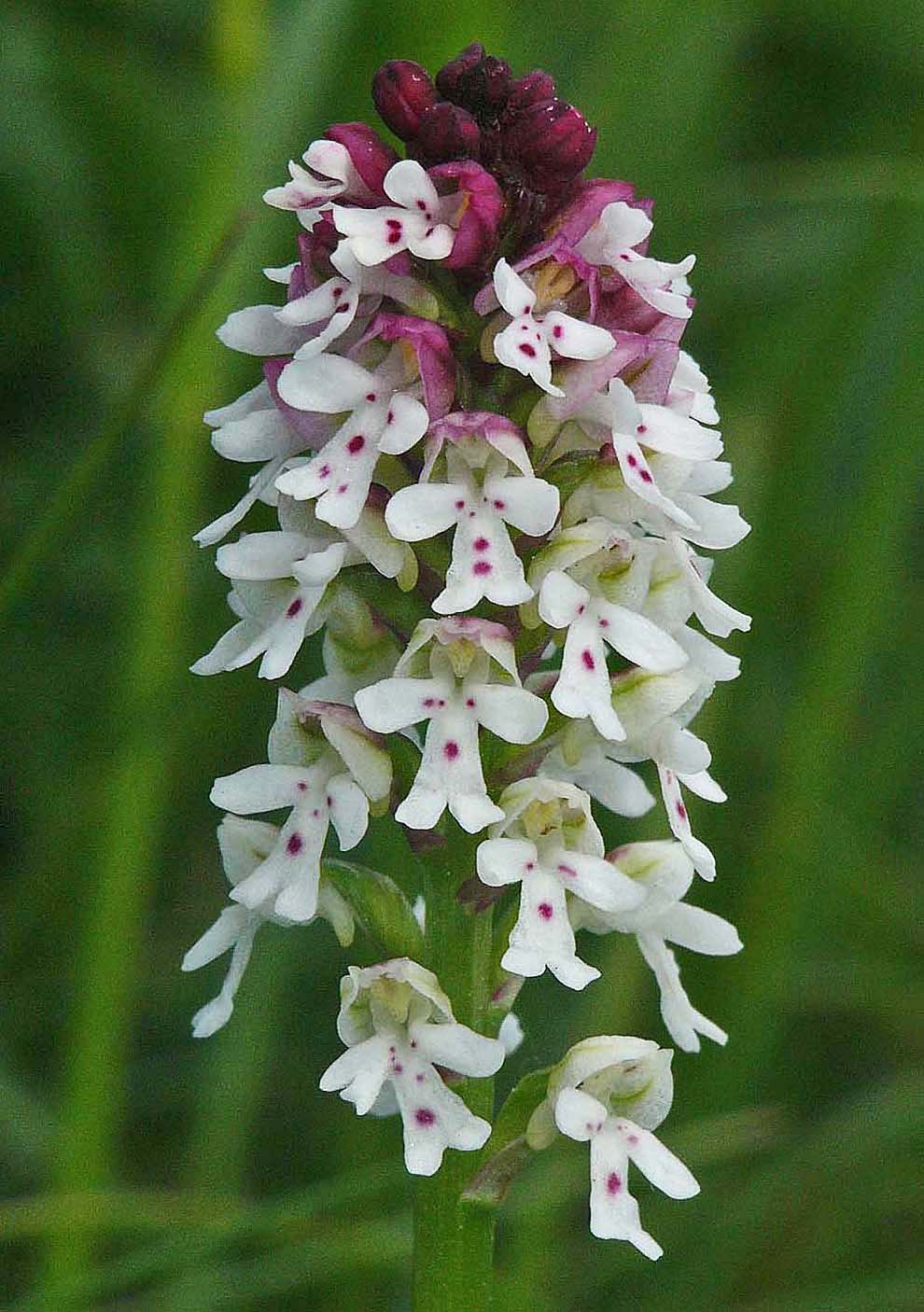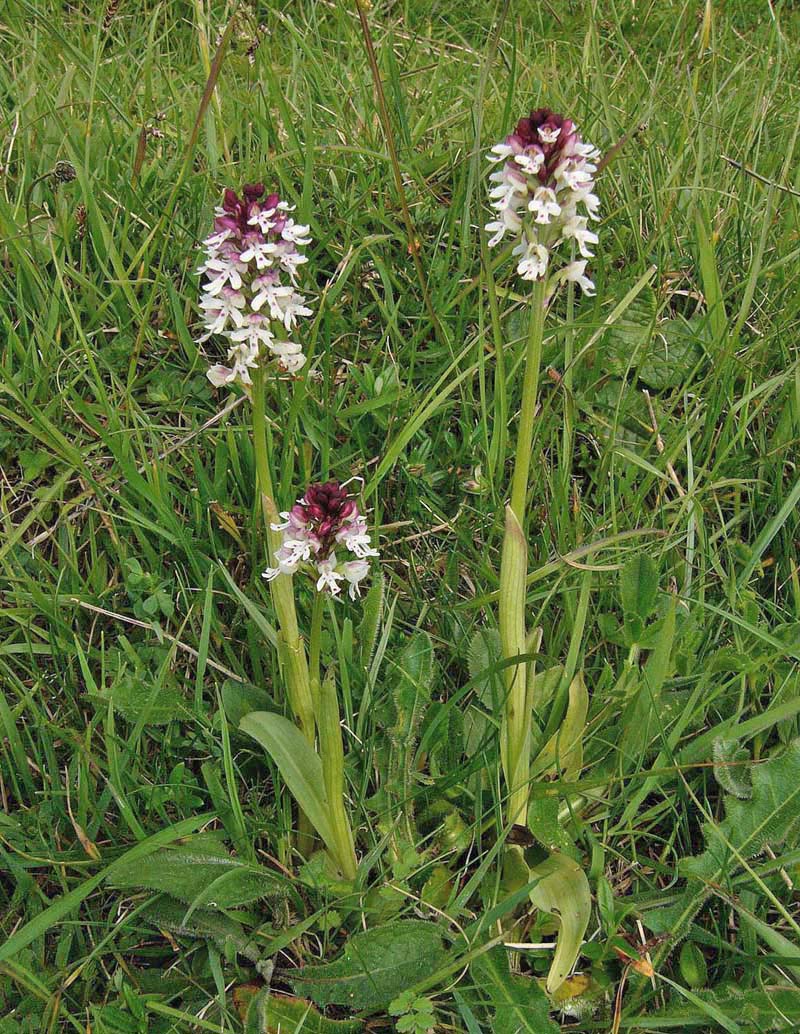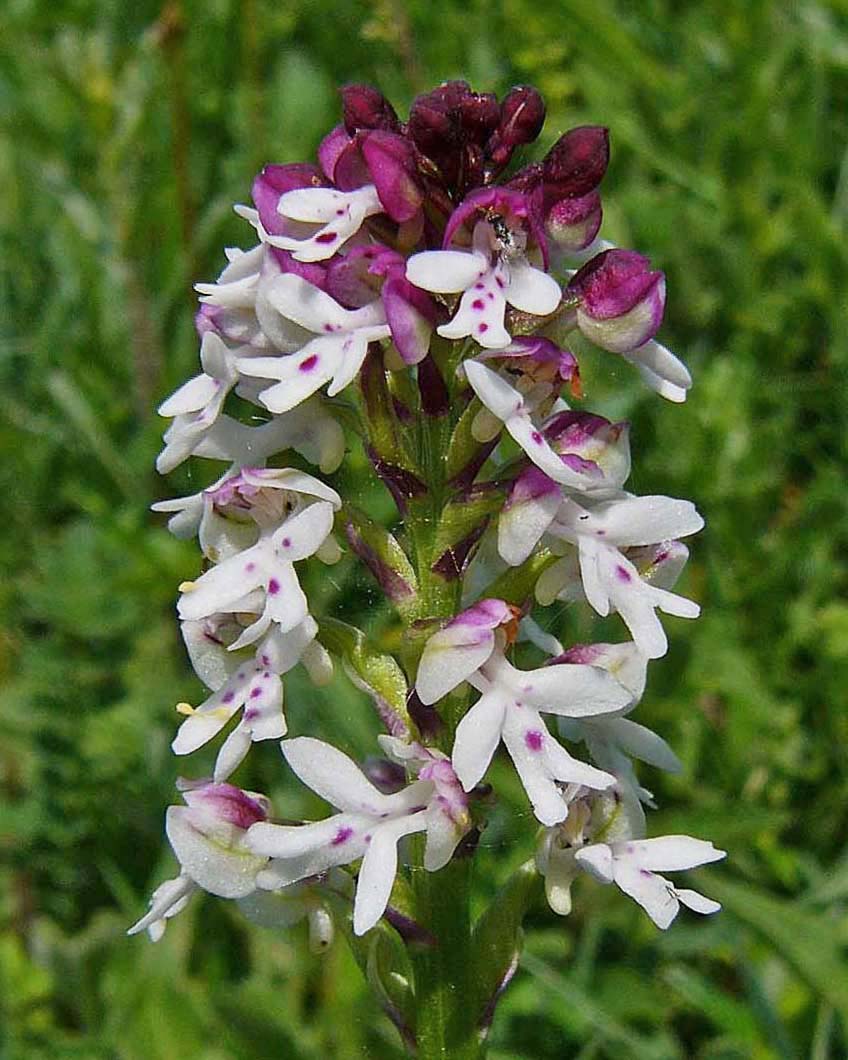This beautiful little orchid was first described from Sweden in 1753 and its name refers to the dark red colouration of the unopened flowers which produces the scorched effect giving rise to its common name of the Burnt-Tip Orchid.
N. ustulata is an isolated species that has always been the subject of debate as to its true generic home. It started its formally described existence as Neotinia ustulata and was then reclassified as an Orchis where it remained for many years until research indicated both it and its fellow O. tridentata group members should more correctly be placed back in the Neotinia stable. It was always puzzling that despite often growing in its thousands with other species of Orchis, O. ustulata was never found to have hybridized with any species other than O. tridentata.
This is a widespread orchid with a range that takes it from the Faroe Islands and Sweden in the north, down to the Mediterranean and eastwards all the way to western Siberia. It's usually at its most common in montane areas where it prefers a position in full sun on alkaline soils, usually short grass and alpine pastures. In Britain it's found only in England and predominantly in the south east where unfortunately it is declining in both sites and overall numbers.
In England N. ustulata appears in May but elsewhere and given the range of eco-zones it covers, it can be as early as April and as late as August. It is now known to have at least two successive waves of flowering and these later flowering plants are thought to be a separate sub-species, provisionally named aestivalis.
